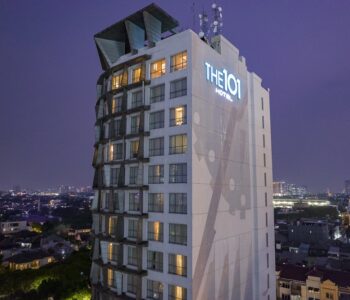After presenting his monumental artworks about restlessness in the city at the Jogja Art Fair (ArtJog) 2009 and wowed some art spaces in Europe, Farhan Siki shared his vision about street art and his other works inspired by the current health crisis.
Seniman Lahir di Jalanan (artist born on the street) was the main theme of the third edition of #BasriMenyapa (Basri greets, Basri stands for Bambang Asrini Widjanarko, an artist, writer and art critic) showcased in the first week of June, partnering with Kidung ArtSpace which emphasized on Pandemic, Vision of Sharing and Farhan Siki.

As we’re still struggling to get out of the Covid-19 outbreak, we’re forced to find ways to survive from this uncertain condition and towards the new era, including the artists. From the Indonesia’s government’s data as many as 226,586 artists and creative artists in April break through the possibilities and mingle with barriers, instead of being stunned to wait for social aids from various sources.
They may even be able to find new formulas, like viruses or plagues that infect creativities. From virtual exhibitions, artist talks, online classes and workshops, meme creations and corporate commercial propagandas to monthly-paid professional discussion forums are considered as their artistic personal protective device. While others, organically create an independent cultural bag with their community by exchanging podcasts by relaying creative content on YouTube or accepting the creation orders of security designs for Fintech.
Bambang Asrini Widjanarko said that those efforts are like VUCA (Volatile, Uncertainty, Complexity and Ambiguity) concept which is soon realized and then we all will compromise to overcome it. The shifting jobs era is booming very rapidly.
VUCA concept found in 1987, it was designed for military leaders to understand the enemies’ manoeuvres thatare undetected, measuring the strength of their weapons and resources, then the concept was later adopted by businessmen and even the artists.

“From this situation #BasriMenyapa was born offering regular programs, greeting anyone with online talk shows with specific topics to build connections, exchange ideas and show creative and innovative figures. They are expected to share, inspire and concretely transmit their survival ways as an ideal independence for all.” explained Bambang Asrini Widjanarko as one of the efforts of the artist community to remain creative during the outbreak.
Presented by Farhan Siki, the talk show dissected his latest works in response to the Covid-19 outbreak. He traced the pandora box of human anxiety, an inner battle against the suffering, the Coronavirus outbreak he presents precisely as a sacred path to God. Via Via (30x42cm, spray paint on Fabriano paper 300 gr) which means ‘streets’ in Italian which clashes with the meaning of via dolorosa, the path of misery to spirituality.
Farhan also showed the faint character of the coronavirus piled up on the images of cactus trees through his work Dalam Gersang in arid (30x42cm, spray paint on Fabriano paper 300gr) that allow us to construct our minds that aridity afflicts humans in the 21st century. It is perhaps not just because of the plague but our humanity’s future, geo-politic conflict in some parts of the universe which creates barren deserts in themind and taste.
“Change is a necessity of life, and humans are the most able and ordinary creatures to deal with change. Good or bad luck, happiness or sadness is something that is interrelated to each other in the rhythm of our lives. Now we’re facing the Covid-19 pandemic, once again as a proof of how we can and are accustomed to facing problems.” Farhan Siki shared his message.
Farhan Siki is famous for doing collective and independent work in the European street art communities and has been selected by the established private gallery, Primo Marella in 2012 with his solo show Implosion in Milan, Italy. Previously, since the era of the New Order evaded, the political climate and the freedom of expression grew, artists are able tofully pledge their creativity .
Farhan Siki undertook various independent and interdependent projects with artists in Jakarta, Bandung, Yogyakarta to Surabaya and Bali from the late 1990s uptoo 10 years later with active groups or solo exhibitions, responding to the diverse atmosphere of the city and its artistic choices: criticism of urban life. He is therefore strongly influenced by this environment and in his work visualises the spirit of the street.







